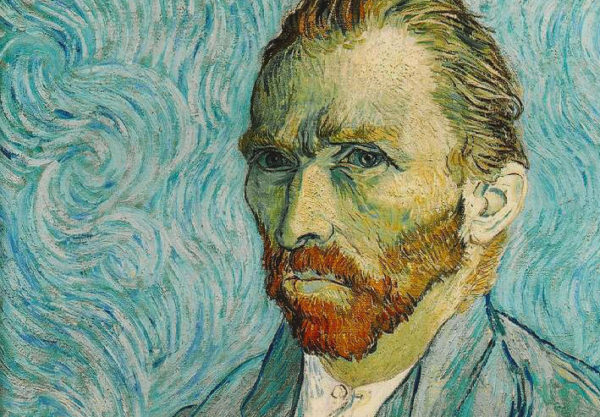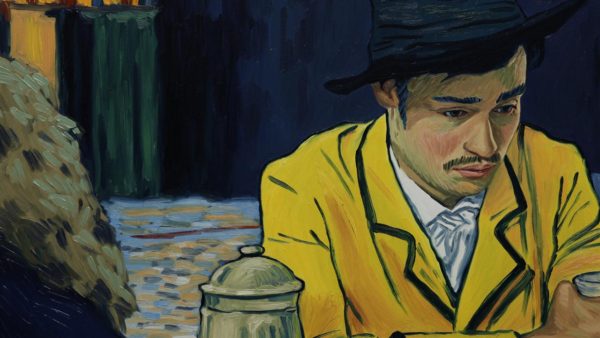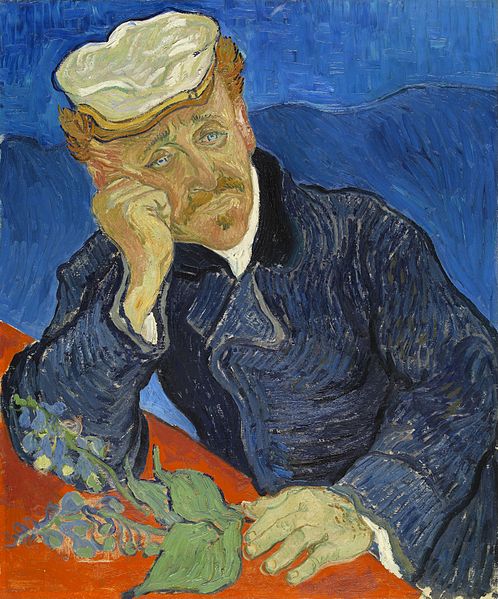Six years in the making, Loving Vincent expands the boundaries of filmmaking. Shot as a live-action movie with actors and then hand-painted, frame by frame, by a team of 125 artists, this is an animated drama of uncommon vitality and creativity. Scheduled to open in Toronto on October 6, it’s a visually stunning and innovative production that breaks new ground cinematically.

Focusing on the life and death of one of the masters of modern art, Vincent Van Gogh, the Dutch Post-Impressionist painter whose talents were recognized only after he died, it takes place in the French towns of Arles and Auvers-sur-Oise in 1891, about a year after his fatal, supposedly self-inflicted gunshot wound.
Suffused with bright, swirling colors reminiscent of two of his masterpieces, Sunflowers and The Starry Night, it unfolds through a series of conversations with several of the iconic characters from Van Gogh’s paintings. Two of the figures are Joseph Roulin (Chris O’Dowd), the postmaster of Arles, and his son, Armand (Douglas Booth), who’s sent on a mission to deliver a letter from Van Gogh to his brother, Theo, in Paris.

Having found out that Theo has passed away, Armand travels to Auvers-sur-Oise, the town in southern France where Van Gogh (Robert Gulaczyk) developed his inimitable style. Armand, his curiosity piqued, is determined to find out more about Van Gogh, a self-taught artist who was 28 when he initially picked up a paint brush.
Van Gogh, who held a number of dead-end jobs before discovering his forte, was an astonishing craftsman. In only eight years, he produced an avalanche of works ranging from paintings to drawings. During his lifetime, however, he sold only one of the more than 800 works he churned out in a frenzy of super-human creativity.

Armand is particularly interested in understanding why Van Gogh apparently committed suicide. Van Gogh, who struggled with mental illness, seemed calm and normal before he supposedly shot himself in the stomach. What, he wonders, was the cause of his suicidal despair? And where did he shoot himself? In his dreary hotel room or in a sun-lit field? On the other hand, as someone else suggests, Van Gogh may have been murdered.
In his quest for answers, Armand talks to a procession 0f people who knew Van Gogh. “He was a nice, quiet man,” says Adeline Ravoux (Eleanor Tomlinson), an engaging young woman who manages the hotel where he stayed. “He was always painting, day in and day out.”
Armand is especially interested in talking to Dr. Paul Gachet, the physician and amateur painter who tended to Van Gogh. Since he’s momentarily unavailable, Armand talks to Marguerite (Saoirse Ronan), his daughter, who fills in a few blanks. In her view, he was rough, awkward and mercurial, but a genius nonetheless, a man for whom no detail of life was too small or humble.

At last, Armand speaks to Dr. Paul Gachet (Jerome Flynn), the art connoisseur who spotted his remarkable talent. The good doctor, who aspired to be a painter himself, provides Armand with a rigorous explanation of van Gogh’s fragile psyche and gives him a facsimile of a letter in which a tormented Van Gogh analyzed himself.
Loving Vincent, written and directed by Dorota Kobiela and Hugh Welchman, is a beautifully-crafted and beguiling film which takes the measure of one of the greatest artists of all time.